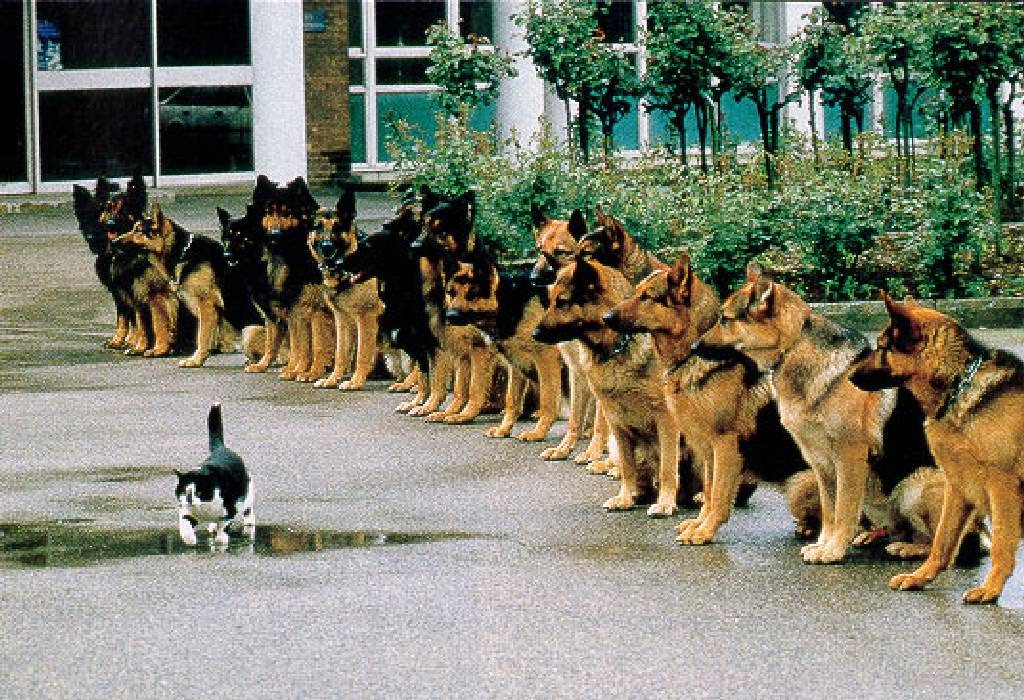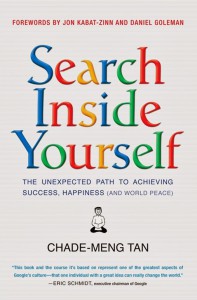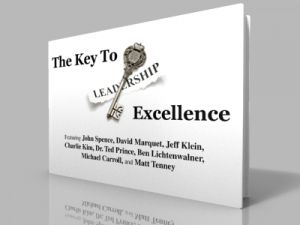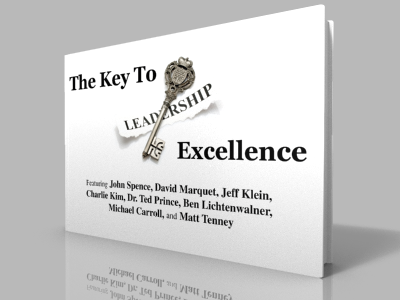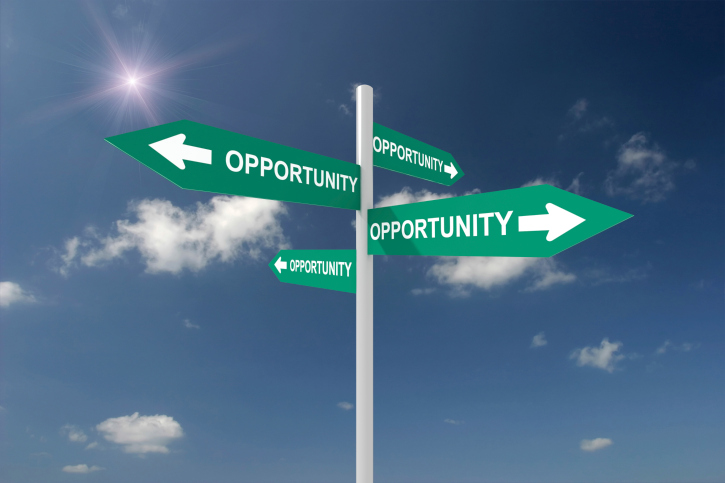As I stepped out onto the street in downtown Philadelphia, I felt invigorated by the cool, crisp morning air. My senses were extra alive that morning. I had just spent most of the previous three hours sitting absolutely still with my eyes closed at a mindfulness retreat led by my good friend and mentor, Michael Carroll.
We had a short lunch break from the retreat. I was heading back to my hotel to grab a bite of the food I had packed.
Due to my heightened senses, everything seemed to glow with beauty in the bright morning sun. The gentle breeze, although chilly, made me smile.
About midway between the retreat center and my hotel, I approached a large man wearing a green winter coat who was sitting on the sidewalk in front of a MacDonald’s.
It appeared as though he had slept outdoors. It also appeared as though he had too much to drink the previous night. He still smelled of alcohol and he had some dried vomit on the front of his green jacket.
I greeted the man with a smile as I approached. He returned my greeting and he smiled, too.
After exchanging a few words, he asked, “By any chance would you be able to get me a hamburger from MacDonald’s?”
This article originally appeared on the Huffington Post. To continue reading, please click here.
Five Tools for Mastering Fear
Of the many unpleasant emotions we can experience, fear may just top the list.
But fear is more than just physically unpleasant. Fear can also keep us from pursuing the things in life that really matter — like following our dreams, and developing and taking care of important relationships.
I have good news though. We can be free from the grip that fear often has on us.
But fear is more than just physically unpleasant. Fear can also keep us from pursuing the things in life that really matter — like following our dreams, and developing and taking care of important relationships.
I have good news though. We can be free from the grip that fear often has on us.
Fearlessness is trainable!
1. How experience reduces fear.
I used to be very afraid of getting up in front of people and speaking. I would get sweaty palms and my stomach would be so tied up that I wouldn’t be able to eat. I would experience so much tension in my neck and shoulders that I would almost always have a headache by the time I had to speak or shortly thereafter.
I used to be very afraid of getting up in front of people and speaking. I would get sweaty palms and my stomach would be so tied up that I wouldn’t be able to eat. I would experience so much tension in my neck and shoulders that I would almost always have a headache by the time I had to speak or shortly thereafter.
Each time I spoke though, I noticed afterword that it wasn’t that bad. This is a trend I’ve noticed throughout my life. Things I fear are never as bad in reality as I make them out to be in my mind.
So one element of training for fearlessness is to simply push ourselves to do things that we fear so that we have more opportunities to develop the wisdom that the things we fear are always worse in our minds than they are when we actually experience them.
As I continued to get up in front of audiences and speak, my fear continued to diminish. Now I speak all the time in front of groups ranging from 10 people to 1,000 people, and there is no longer any fear associated with doing it.
2. Practicing investigation of our inner worlds.
This article originally appeared on the Huffington Post. To continue reading, please click on this link – http://www.huffingtonpost.com/matt-tenney/success-and-motivation-_b_5479147.htmlhttp://www.huffingtonpost.com/matt-tenney/success-and-motivation-_b_5479147.html
Search Inside Yourself
For years now, Google has offered a mindfulness-based program, called Search Inside Yourself, as a way to help some of the smartest, most talented people in the world perform even better and simultaneously increase their levels of happiness and well-being (which also has been shown to improve performance). The focus of the program is to improve emotional intelligence.
Search Inside Yourself creator, Chade-Meng Tan (known as Meng), is an engineer by training who decided to reverse engineer high levels of performance. He knew that emotional intelligence has been shown in numerous studies to be the single greatest predictor of high levels of work performance and leadership ability (in fact it is twice as important as the next most important ingredients), even among tech employees (4 of the top 6 competencies of star performers in the tech sector are emotional competencies). He also knew that mindfulness practice is arguably the most powerful method there is for developing emotional intelligence. Armed with this knowledge, Meng, along with a group of leaders in the fields of mindfulness, emotional intelligence, and leadership development, created a mindfulness-based emotional intelligence training program.
In Search Inside Yourself, Meng provides us all with access to essentially the same training that is provided to Google employees who go through the course on Google’s campus. He breaks the training down into three components: attention training, self-knowledge/self-mastery, and creating useful mental habits. Attention training, he says, is the basis of all higher cognitive and emotional abilities. We then use our trained attention to create a “high-resolution” perception of our own cognitive and emotional processes, which enables deep self-knowledge and self-mastery. Finally, to help us out while we’re training our attention and gaining self-mastery, he offers very helpful, evidenced-based tools for developing useful mental habits, like kindness.
Although the summary above may sound a little technical, and Meng does cite quite a bit of scientific research to support claims made for the benefits of mindfulness, the book is extremely easy to read and very enjoyable. Meng is so logical, and he has an excellent ability to break down complex ideas into simple, step-by-step methods for practice. He also has a tremendous sense of humor. I found myself smiling a lot while reading the book, and even laughing out loud a couple of times.
I highly, highly recommend this book. This is the best book on mindfulness I have ever read (I’ve read almost 100 books on mindfulness), and it is definitely in my top 10 favorite books across all categories. Search Inside Yourself has the power to help readers perform better and increase levels of happiness, and it just might help create the conditions for world peace.
This Breath Is A Miracle

All too often, we forget that each moment of life, pleasant or unpleasant, is a miracle. Indeed, the breath we’re taking right now is a miracle.
It’s pretty easy to get caught up in the dramas we create in our minds, isn’t it? If the drama is exciting, we feel alive. If it’s dull and boring, we may feel depressed.
This drama can pull us away from the simple truth that our existence in this moment is an absolute miracle. Think of all the things that had to happen just the way they did, since the beginning of time, for you to be alive in this moment. Think of the nearly infinite processes that are occurring in this moment allowing you to live. The sunlight, our atmosphere, and thousands of processes in your own body are all absolutely necessary for you to be alive in this moment.
Although I think it is very helpful to reflect in this way from time to time, we can’t be thinking about these things all the time, right? We have things to do!
Fortunately, there is a miracle that is always happening, wherever we are, in all activities – the breath. And, luckily for us, we don’t need to think about the breath to be in touch with the fact that it is a life-sustaining miracle. All we need to do is be aware of it. In fact, becoming aware of the breath actually enhances our engagement in the present moment.
Simply being aware of the fact that we are breathing, we can become aware in a deep way, beyond thought, of the miracle of being alive in this present moment. We see our personal drama in perspective and are freed from its grip. Our mind and body become united and whole, and we are present for ourselves and those around us.
Surely, the mind will doubt that there can be any value to simply being aware of the fact that the body is breathing. Nevertheless, I invite you to practice awareness of breathing and see for yourself how powerful such a simple act can be.
You might just find yourself smiling – aware in a subtle, intuitive way, that this moment is indeed a miracle.
This breath is a miracle.
image credit – http://centerspacepilates.com/2012/06/explore-breathing/
Developing an Abundance Mentality
image credit: manifestyourlifedream.com
Having an abundant outlook is something I have struggled with a lot over the years. Opening up and accepting that there is more than enough to go around for everyone seems to go against some force of habit I have to make sure my needs are met before I can think about meeting the needs of others. This is the scarcity mentality.
Although I’m still growing in this area, I feel as though I have grown a great deal over the last few years and that the growth is taking on an upward curve.
I’d like to share why this is happening.
First, what does it mean to have an abundance mentality? An abundance mentality, made popular by Stephen Covey in his book The Seven Habits of Highly Effective People, is the belief that there are more than enough resources for everyone, which means it is possible to find win-win resolutions. This is in contrast to the scarcity mentality, which leads to people believing that only one side can truly win in a transaction.
Second, what are the benefits of an abundance mentality? The intangible effects on our character occur each time we think and act with the attitude of abundance. We move closer to reaching our full potential as human beings. With the exception of feeling good, most the tangible benefits of an abundance mentality are not immediately apparent. Benefits such as improved relationships, material objects, etc., come much more slowly, but they do come. This is the law of the attraction so many successful people attribute to being the “secret” to their success.
So how do we achieve this abundance mentality?
Actually, an abundance mentality is not something we gain or achieve. The abundance mentality is actually an aspect of our true nature. It has simply been covered it up with the conditioning most of us receive in our natural development as human beings.
The reality is that our minds and bodies are deeply interconnected with the “outside world”. Although we may know this intellectually, most of us have not had enough personal insight into this truth to break us free of our habitual attachment to the idea that our minds and bodies are somehow completely separate from everything around us.
The practice of mindful investigation of reality can help us to gradually see more clearly the deep interconnection between everything in our world. In his masterwork, The Law of Success, Napoleon Hill, perhaps the most well-respected expert on success in history, said that the basis for the secrets to success is harmony with all around us, which comes from understanding the interconnected-ness of all things.
As the truth of the interconnection of “things” becomes more clear, we begin to realize that we are already connected to everything we could ever want or need. There’s nothing we have to get that isn’t already ours.
In what ways do you see your interconnection to everything around you?
CLICK HERE to learn more about the eBook, featuring chapters from John Spence, Jeff Klein, Charlie Kim, Michael Carroll, Ted Prince, David Marquet, and Ben Lichtenwalner.
Why Mind Wandering Leads to Unhappiness and Poor Performance
While I was confined to the brig, my secret to happiness was a simple one: train the mind not to wander so much.
This week, we’ll discuss some fascinating research by Harvard researcher Matt Killingsworth that points out how mind wandering not only leads to poor performance, but to unhappiness as well.
I think it’s pretty obvious that if we’re easily distracted, we’re not going to perform as well at any task as someone who is not so easily distracted. However, maybe it’s not so obvious that being free from a wondering mind also increases happiness.
When we are free from being pulled around by our thinking, and are fully present with what we’re doing now, we are no longer victims of the comparative thinking that tells us, “You could be happy if you were just someplace else, or if you just had _____. You’re happiness will come later, at some point in the future.”
When we are no longer caught up in comparative thinking, we realize that the present moment is usually pretty OK. In fact, I realized that the present moment is actually perfect. It is our thinking that makes it otherwise.
Of course, those of us who are skeptics immediately think, “What about when the present moment is inherently unpleasant? Surely it would be better to allow our mind to wander so that we’re not so aware of the unpleasantness.”
Actually, the research found that people with a wandering mind were actually less happy during unpleasant experiences than people who were more present.
One of my favorite quotes from a great master of mindfulness practice was his reply to the question, “What do you practice?”
The master said, “We practice walking, eating, cleaning, and sitting.”
“Everyone does that!”
The master replied, “True. But when we walk we know we’re walking, when we eat we know we’re eating, when we clean we know we’re cleaning, and when we sit we know we’re sitting.
Here’s a great TED talk that goes into the research a little more. Enjoy!
Image Credit: http://www.sciencedaily.com/releases/2012/10/121011162148.htm
Being Our Ideal Me
Have you ever done or said something that you wish you hadn’t? I think we all have. Why do we do that?
I think we could all agree that the less often we find ourselves in that situation, the better off we are in all areas of life. So I’d like to share some thoughts on being free from the tendency of doing or saying things we’d rather not, and consistently being what my friend and mentor John Spence calls our “ideal me”.
A major obstacle to being our ideal me is not really knowing exactly who our ideal me is. I suggest you really think about who is your ideal me, and then write it down.
What type of qualities do you most aspire to have? How does the ideal you treat others on a regular basis? How does the ideal you respond to intense situations, like when someone is treating you unfairly, unkindly, aggressively, or in another way that could give rise to difficult emotions like anger or fear?
Write these down in the present tense. For example, “I am kind. I respond to annoying people with patience and kindness. Etc. “
Once you’ve written a clear, brief description of your ideal me, I suggest that each morning, at some point before getting into the flow of the day, you read out loud your description of your ideal you, so that it becomes firmly planted in your subconscious mind.
Although these first two steps are very important, they will be of little value if we haven’t developed a high level of self-awareness. When difficult emotions or conditioned, habitual reactions arise, we will find that we forget all about being our ideal me once we get caught by those habitual reactions.
Thus, having a solid daily practice of mindfulness is essential for consistently being the person we want to be, which means being a person of integrity.
The stronger our practice of mindfulness, the easier it is to see our habitual reactions arise internally and have some space around them. As long as there is some space between our awareness and whatever thoughts or emotions are present, we are able respond in a way that is in accord with our aspirations. We can consistently be the person we aspire to be.
A particularly helpful practice for consistently being who we aspire to be is below (it is much more effective if we already have a strong daily practice of mindfulness).
Whenever you notice a thought pattern or emotion that is not in accord with your ideal me:
- Mentally note the emotion/thought and stop interacting with the perceived cause of the reaction except to ask for a moment or excuse yourself.
- Take 1-3 consciously controlled breaths. This stops the emotive response in the body.
- Investigate the emotion with awareness. What is anger like in the body?
- Take a moment to think of how you would like to respond to the situation or person in a way that is in accordance with your ideal me.
This is one of the most powerful practices I know of. Please let me know if you use it and how it works for you.
May kindness and compassion inform all you do,
matt
We’re Always Getting What We Need
(Image Source – http://crenshawcomm.com/how-to-turn-bad-publicity-into-good-pr/)
Fascinated by the amazing links I am finding between the benefits of mindfulness and realizing success in life, a couple years ago I did a lot of studying on this topic of “success”. I recently finished Napoleon Hill’s masterwork, The Law of Success, which was the result of over 30 years of research that included personal conversations with hundreds of the most successful people in the world, including Andrew Carnegie, who rose from poverty to become a great businessman and philanthropist.
Napoleon Hill often taught how extremely important faith is in regards to achieving whatever it is that we set out to achieve in life. He wasn’t referring to faith in any particular dogma or God, per se, but self confidence and faith that we are always receiving exactly what we need to learn and grow, in each and every moment.
For me, the practice of mindfulness has allowed my faith in this last truth to become unshakeable. I am certain that although I may not be getting what I want, I am always getting exactly what I need to help me grow and develop as a human being. This faith makes life absolutely amazing!
I believe that mindfulness has been so powerful in strengthening this faith because it allows us to verify the truth of it in small ways quite often. We learn quickly that unpleasant experiences are incredible teachers. By investigating these situations with mindfulness, they not only help us develop a strong character, but often lead to deep, transformative insights that result in significant shifts consciousness.
We start with little things like itches, annoying noises, and aches and pains, and before long, we see even more serious “problems” as exactly what we need to learn and grow. This leads to a sort of perpetuating cycle of increased faith. As we continue to see the benefits we are receiving in the form of difficulties, we put more energy into our practice of mindfulness, which leads to more direct experience of the truth, which leads to more energy, etc.
CLICK HERE to learn more about the eBook, featuring chapters from John Spence, Jeff Klein, Charlie Kim, Michael Carroll, Ted Prince, David Marquet, and Ben Lichtenwalner.
How To See Opportunities Everywhere
For the last couple years, despite the struggling economy we’ve all slogged through, I’ve noticed something quite interesting. I’ve been gradually seeing more and more opportunities.
In fact, my biggest challenge right now is determining which opportunities I should focus on most. I am spending a good deal of time planning ways to pass opportunities off to others so that I can be more focused on the ones where I can have the greatest impact.
I’d like to share a little bit about why I think I’ve been gradually seeing more and more opportunities, and how you can do the same.
Since I began diligently practicing mindfulness, I’ve noticed a steady increase in my ability to see opportunities where most people see only problems. I think there is a very simple explanation for this.
One of the core aspects of the practice of mindfulness is to face our things that bother us, things that are difficult, and things that are unpleasant or uncomfortable with a curious attitude of investigation.
At first we do this on faith, as we’re told we might learn to be free from suffering if we practice in this way. With continued practice though, we start to see the amazing results of fully facing and investigating the unpleasant aspects of life.
As we see these results, we begin to welcome things that are difficult, unpleasant, or uncomfortable, knowing that these are our greatest teachers and that facing these things results in opportunities to learn, grow, and serve others.
This ability to open ourselves to what most people try so hard to avoid or get rid of, results in a whole new way of seeing the world around us. Instead of seeing problems, we see only opportunities. It starts with little things like itches, discomfort, and difficult emotions, but gradually expands to encompass all of experience.
CLICK HERE to learn more about the eBook, featuring chapters from John Spence, Jeff Klein, Charlie Kim, Michael Carroll, Ted Prince, David Marquet, and Ben Lichtenwalner.
A Mind Like The Ocean: A Practice for Being Free From Stress
One of my favorite metaphors for the fruits of the practice of mindfulness is cultivating a mind that is like an ocean – open and spacious.
Most of us have surely had days where so many things went “wrong” that we felt as though if just one more thing went “wrong”, we would lose it. I know I’ve certainly had days like that. It seemed as though the mind was just absolutely full and there wasn’t room to handle even one more frustrating situation.
With the continued practice of mindfulness, we tend to notice that the mind gradually becomes more spacious. Sometimes, especially while sitting still in mindfulness, the mind seems so expansive and spacious that it is just like a vast ocean, with almost endless room between the thoughts and feelings that arise.
With this spaciousness comes a gradually deepening sense of “There’s room for this.” We develop a wonderful capacity for being able to be confronted with increasing amounts of challenging situations without losing this sense of, “There’s room for this too. This is no problem.”
Ultimately, it is insight into the fact that our thoughts and our feelings are not we are that allows the mind to become and remain more spacious. However, there are some skillful means that we can employ to get a sense of this while sitting in mindfulness. My favorite practice is to open the mind by becoming aware of and kindly accepting increasingly larger areas around me.
I start with gently smiling to the body sitting in the room I’m in for a few breaths, noticing whatever comes in through the senses. Then, I continue to expand in the same way to my neighborhood, my town, my state, the country, and then the whole planet.
With a mind that’s more open and spacious, I then return to simply being aware of the mind and body. I notice that there seems to be a little more space between the thoughts that arise in the mind. Thus, it becomes easier to actually see or hear a thought arise in the mind, bring it up so it’s fully conscious, and see or hear it fade away, leaving me observing an empty, silent mind.
Seeing thoughts arise and pass away in this way makes it very clear that I am not my thinking. Thoughts are just things that arise and pass away. It is this insight into the fact that we are not our thinking that allows the mind to gradually remain more spacious, able to handle increasingly difficult situations in life with perfect peace.
Does your mind often feel as though it’s too busy and full? Would you like to have a mind like the ocean?
Just CLICK HERE, and I’ll send you this eBook, featuring chapters from John Spence, Jeff Klein, Charlie Kim, Michael Carroll, Ted Prince, David Marquet, and Ben Lichtenwalner.







